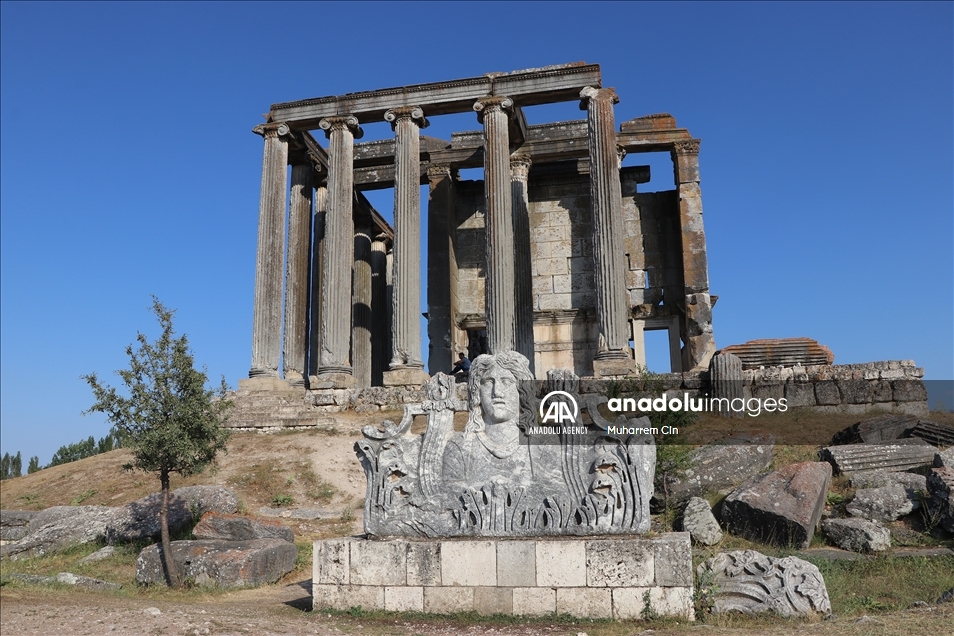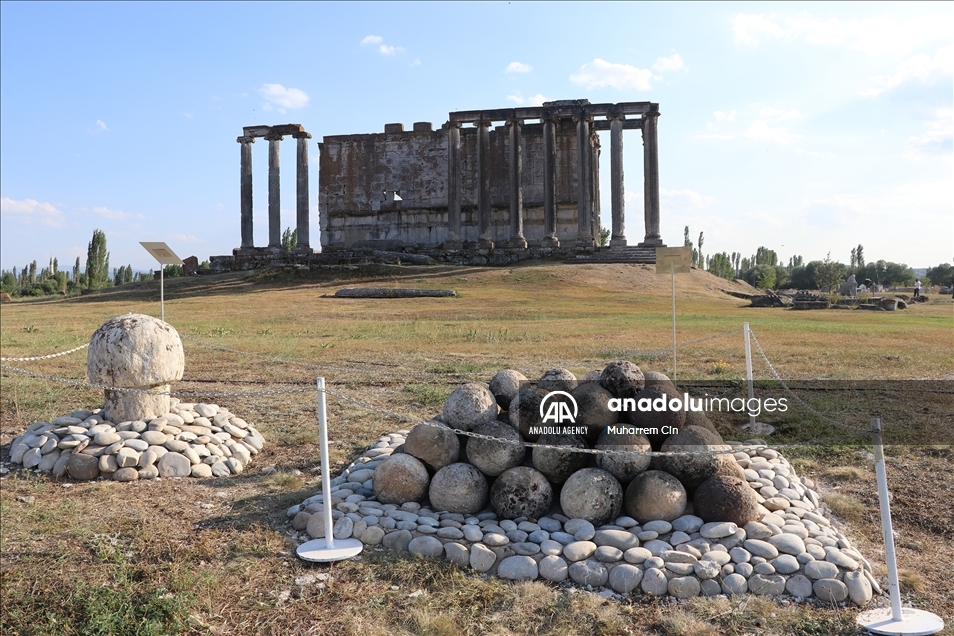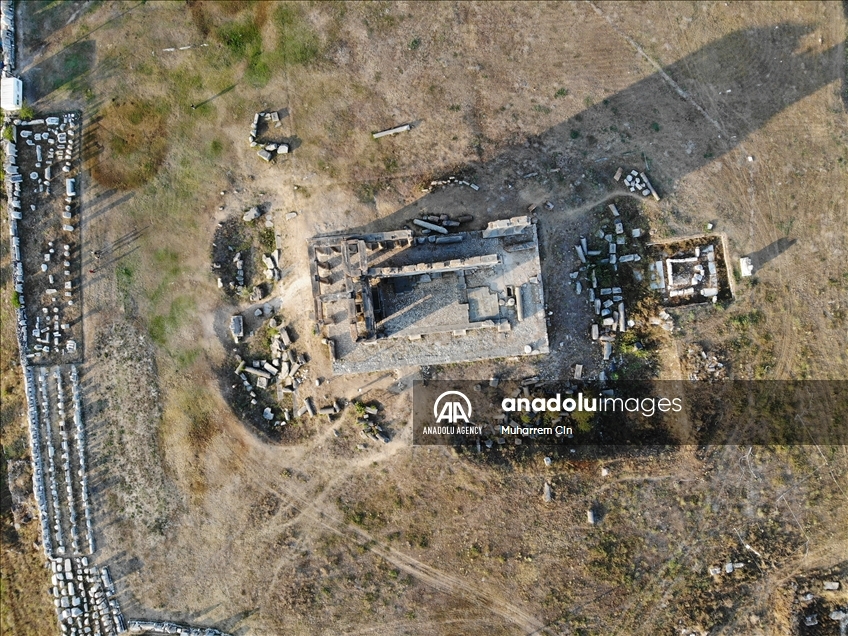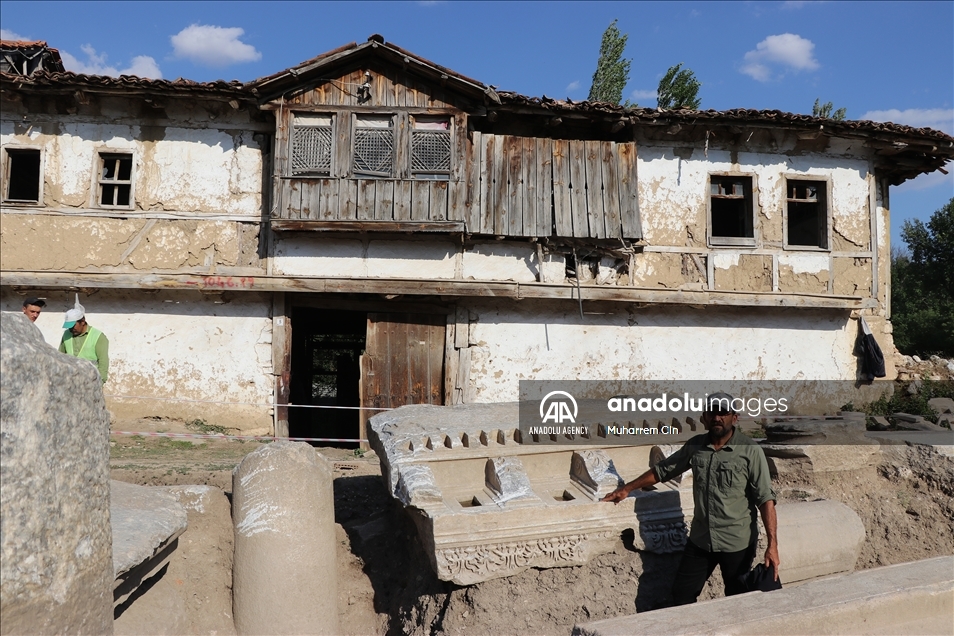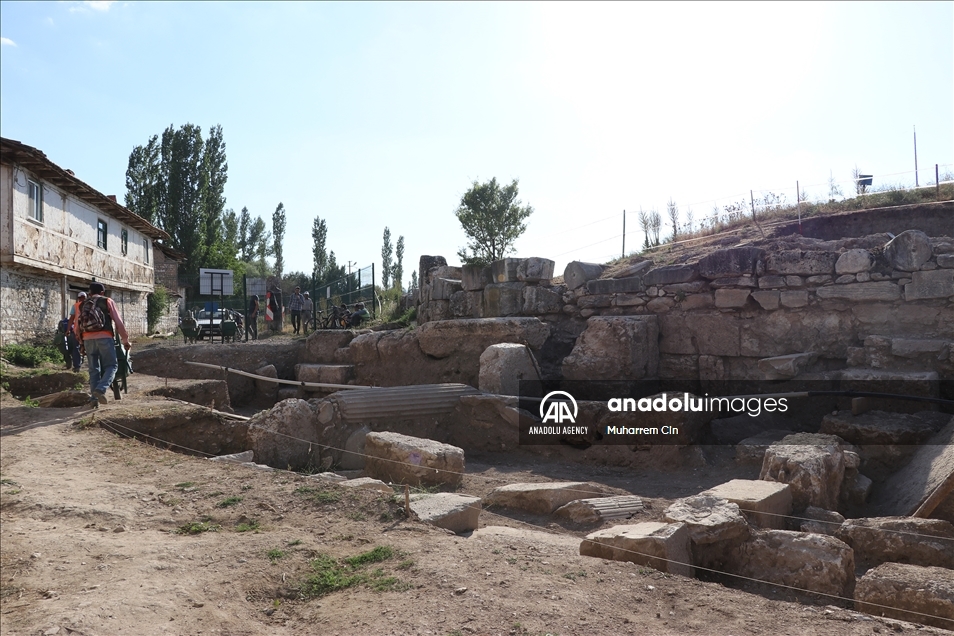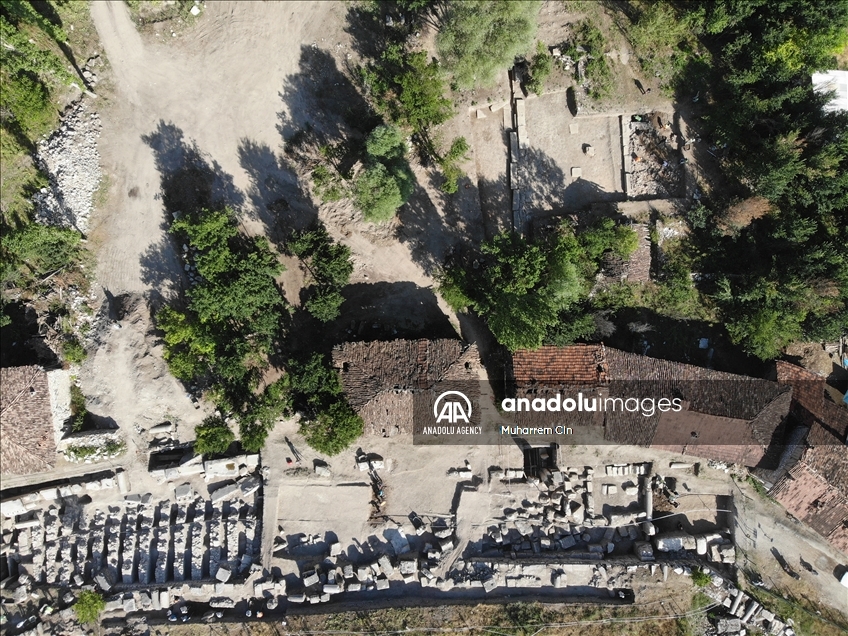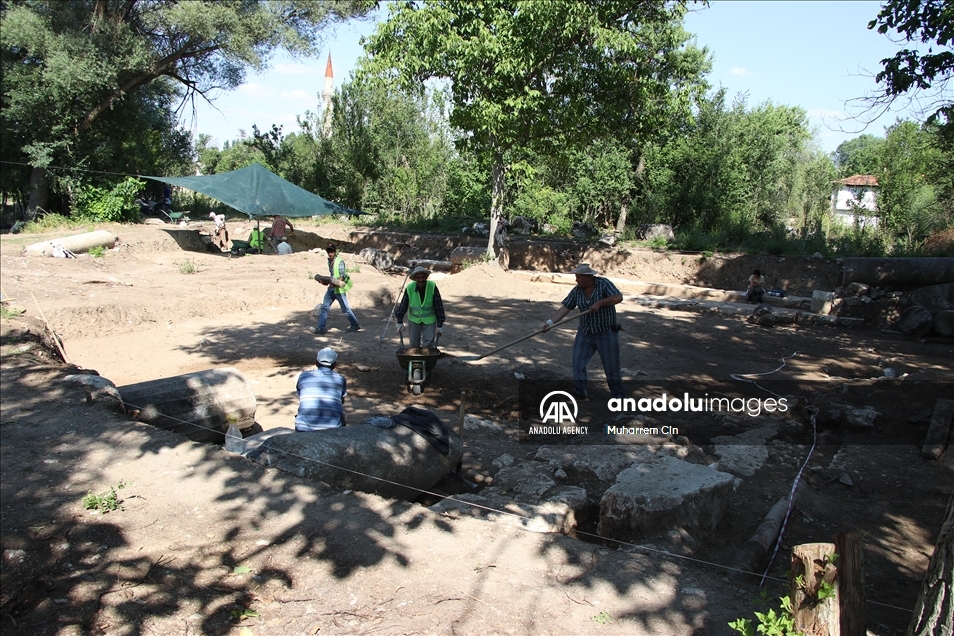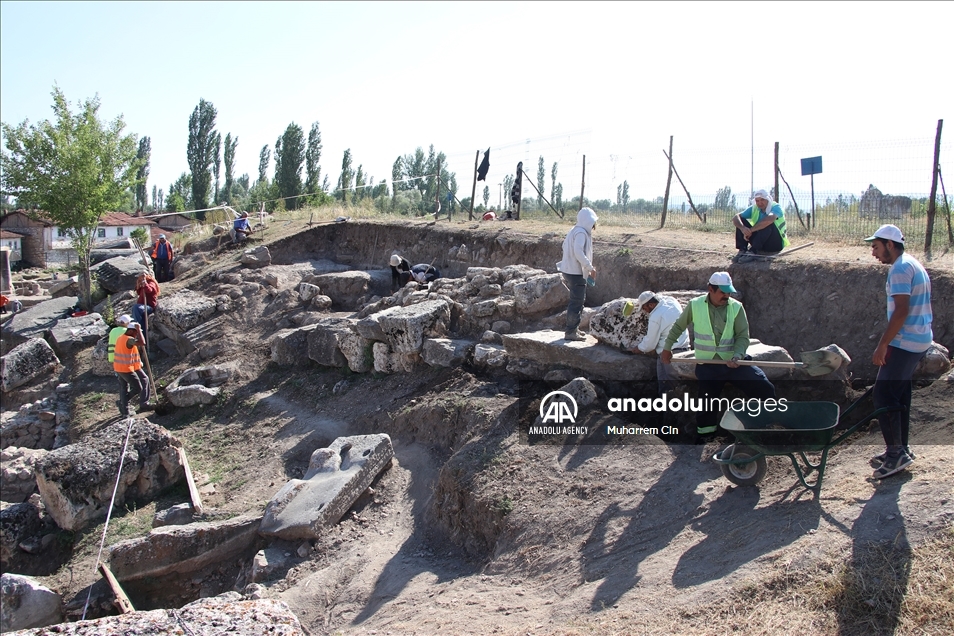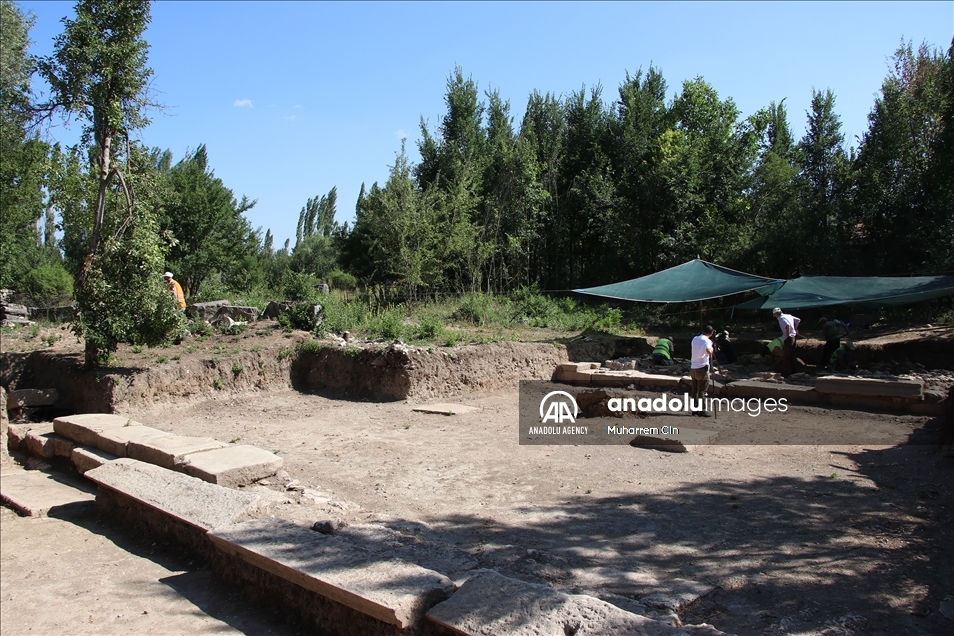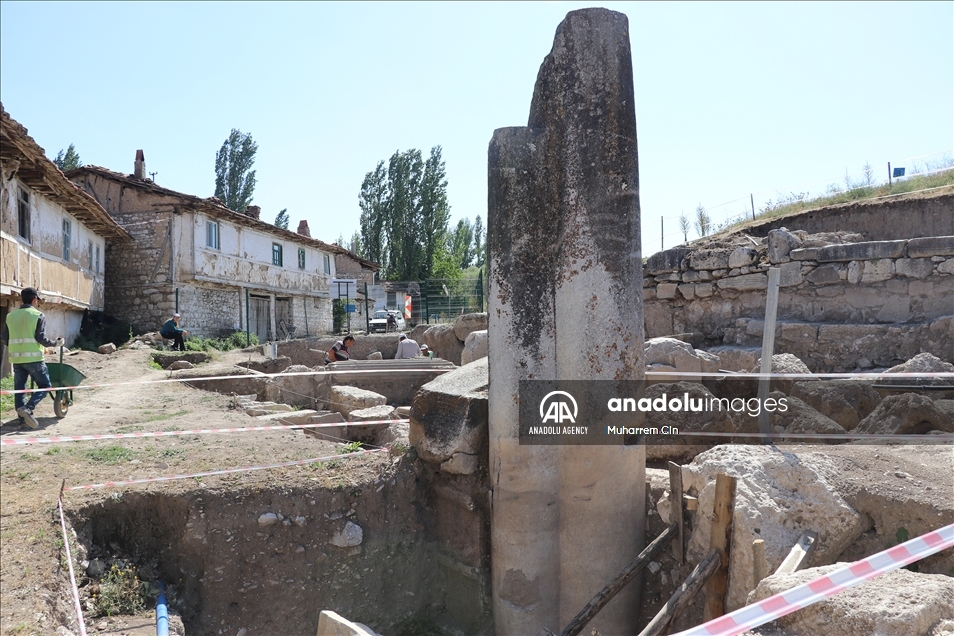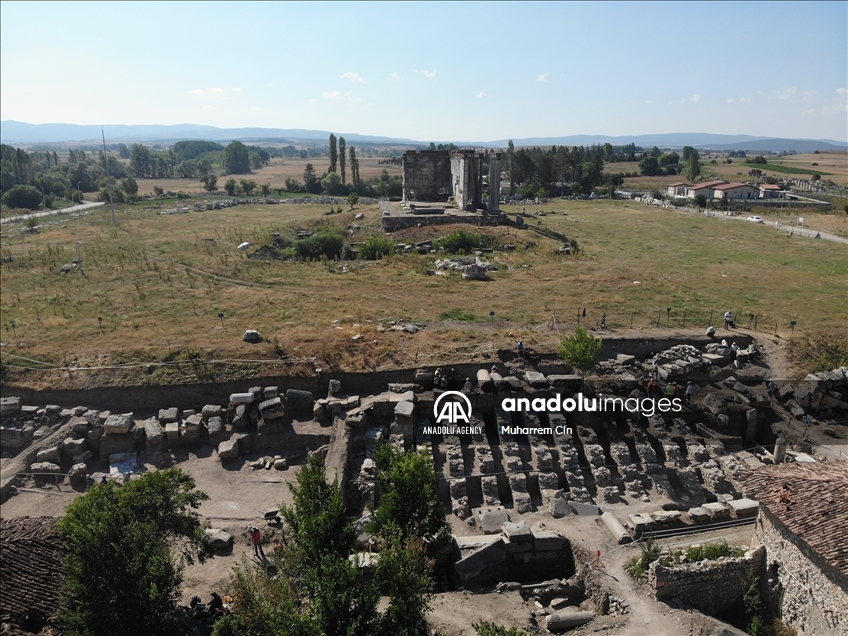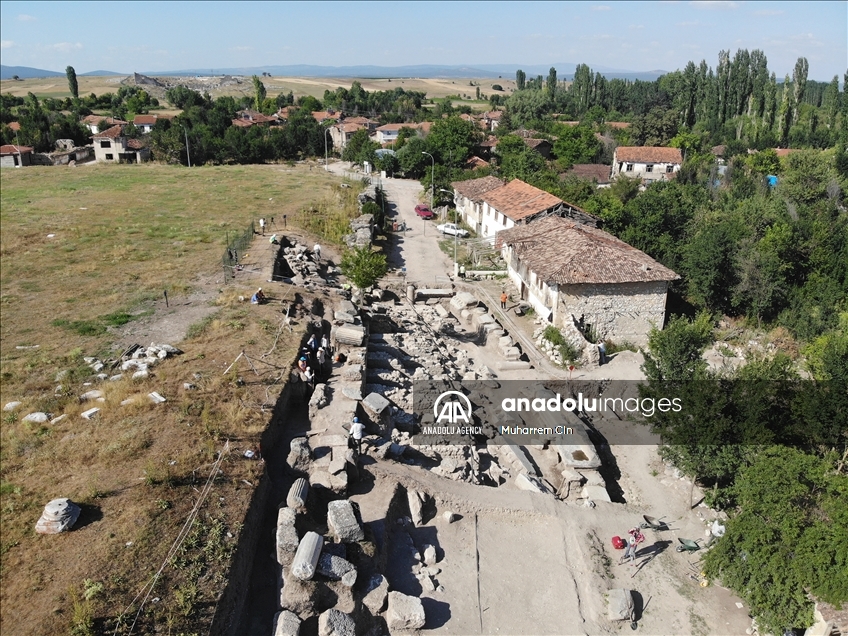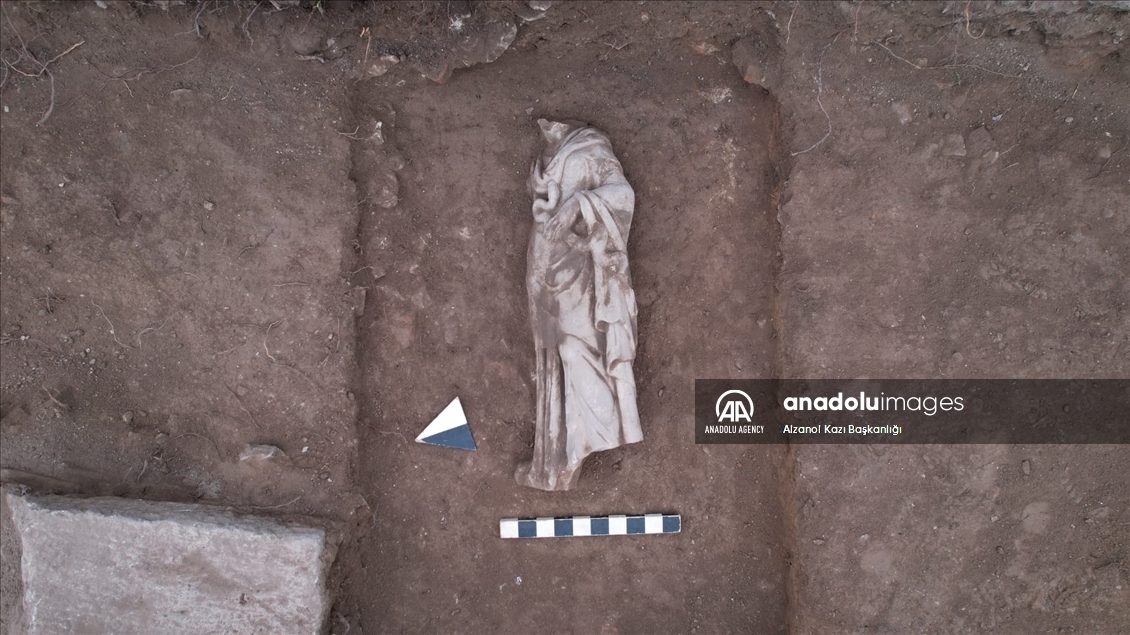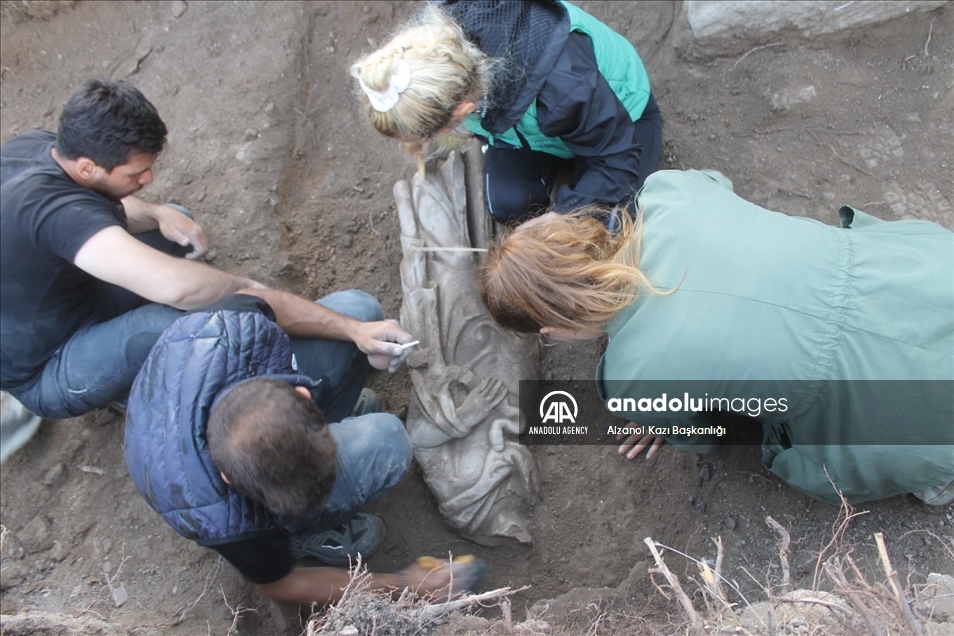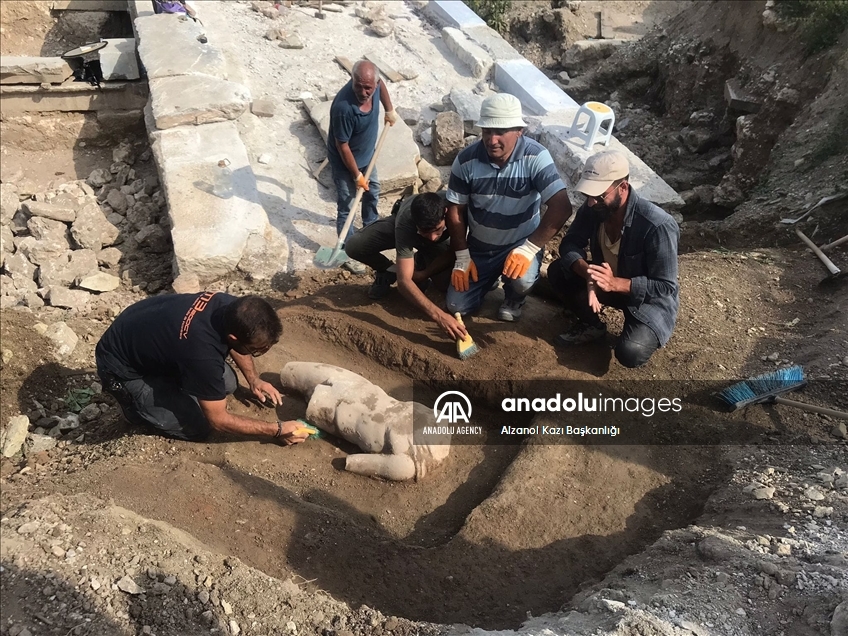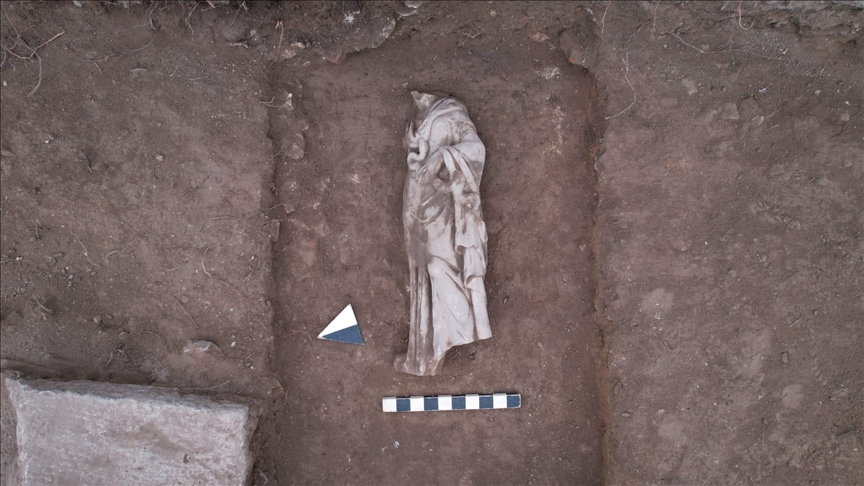
KUTAHYA, Turkey
An ancient statue of the mythological goddess Hygieia – seen as the guardian or personification of health – has been discovered in an ancient city in western Turkey, according to a researcher.
“We unearthed a statue of Hygieia, known as the goddess of health and cleanliness, the daughter of Asclepius, the god of health in Greek and Roman mythology,” Gokhan Coskun, who coordinates the dig in the ancient city of Aizanoi, told Anadolu Agency.
Noting that the marble statue’s head is missing – the fate of much ancient statuary – Coskun, an archeologist at Dumlupinar University in central Turkey, said: “Unfortunately, it hasn’t survived to the present day, but in its current form, we can see that this statue is about the size of a human.”
“During past digs in Aizanoi, finds related to Hygieia were also found,” he said. “This situation makes us think that there may have been some construction and buildings related to the health cult in Aizanoi during the Roman era.”
Located near the town of Cavdarhisar in the Kutahya province, the site is also home to one of the best-preserved temples in Anatolia dedicated to Zeus, the thunderbolt-wielding king of the Greek Olympians.
Groundbreaking ancient site
Seen as boasting a history rivaling Ephesus, another iconic ancient city in Turkey, Aizanoi was added to the UNESCO World Heritage Tentative List in 2012, with excavation efforts ongoing now for almost a decade.
Coskun said that around 100 workers and 25 technical personnel are working on digs at the nearly 5,000-year-old site.
“We’re trying to reveal the columned galleries on the west and south wings of the agora (bazaar) and the shops right behind them,” he added.
Coskun added that the statue of Hygieia – related to the modern word “hygiene” – was unearthed inside the columned gallery on the south wing of the agora.
Located 57 kilometers (35 miles) from the Kutahya city center, the ancient site saw its golden age in the second and third centuries AD and became “the center of the episcopacy in the Byzantine era," according to the website of the Turkish Culture and Tourism Ministry.
Recent excavations around the Temple of Zeus indicate the existence of several levels of settlement in the city dating from as far back as 3000 BC. In 133 BC, it was captured by the Roman Empire.
In 1824, European travelers rediscovered the ancient site.
Between 1970 and 2011, the German Archeology Institute unearthed a theater and a stadium, as well as two public baths, a gymnasium, five bridges, a trading building, necropolises and the sacred cave of Metre Steune – a cultist site thought to be used prior to the first century BC.
Since 2011, Turkish archeologists have been carrying out the work at the ancient site. This year, the excavations were transferred to the Kutahya Museum Directorate.
Anadolu Agency website contains only a portion of the news stories offered to subscribers in the AA News Broadcasting System (HAS), and in summarized form. Please contact us for subscription options.
